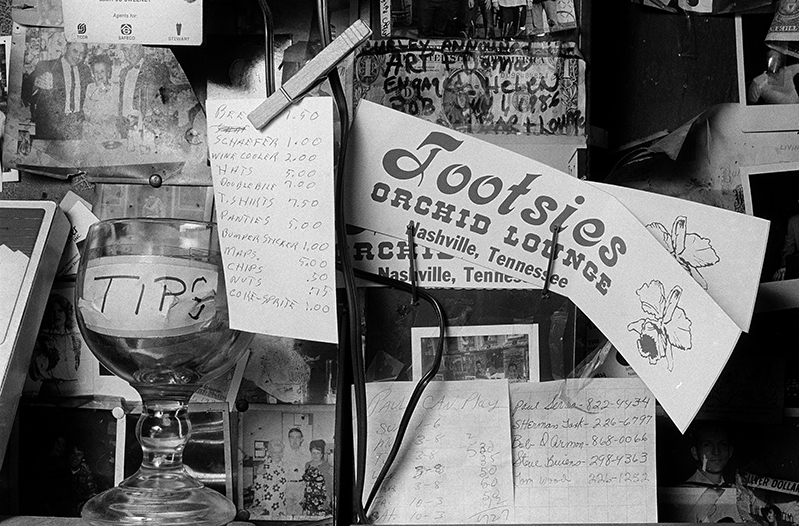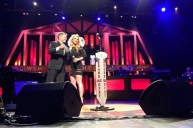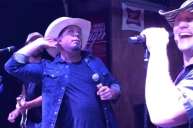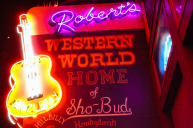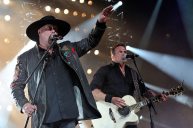Anybody who has been to downtown Nashville knows the Lower Broadway district. Over the last 20 or so years, it's become a bustling urban jungle of neon honky-tonks and music landmarks, like Tootsie's World Famous Orchid Lounge and the nearby Ryman Auditorium.
Videos by Wide Open Country
Right around the block from the Country Music Hall of Fame, tourists shuffle from corner to corner day and night hoping to get a taste of Music City's famous flair. And you know, maybe catch a celebrity sighting or two (good luck).
But what a lot of folks don't know is Broadway is not far removed from a very seedy past. And one club in particular — Tootsie's — saved it from disaster nearly 25 years ago. The historic honky-tonk opened its doors in 1960. To celebrate Tootsie's birthday, let's take a back on its storied history and impact on Tennessee.
Tootsie's is Born
In 1960, Hattie Louise "Tootsie" Bess bought the old spot, then known as "Mom's," on the corner of 5th and Broadway. She hired a painter, who surprisingly chose a rich purple color to give the spot a new vibe. So, naturally, Bess called it her "orchid lounge."
The famous honky-tonk gained its reputation as a musician's hangout almost entirely thanks to its proximity to the Ryman Auditorium. At the time, the "mother church of country music" hosted the Grand Ole Opry, one of the most famous musical revues in the country.
Performers at the Opry would sneak out the side door and head across the alley to Tootsie's before, after and even sometimes in the middle of their sets.
But while location put Tootsies Orchid Lounge on the map, it was the real-life "Tootsie" Bess' hospitality that made it a breeding ground for some of country music's biggest stars.
In a special piece for WZTV Nashville, Willie Nelson recalled how Bess made every artist feel like a star. "When I first came to town, I had a song I had written that I had gotten on the jukebox there," says Nelson. "And Tootsie would play it, and I felt like I really hit the big time because I was on Tootsie's jukebox."
Nelson and future Highwaymen partner Kris Kristofferson even lived above Tootsie's when times were tough. Bess ran tabs for anybody and everybody, making sure they felt at home, even if they were basically broke.
She even kept a box of "IOU's" back by the bar for down-and-out patrons. Rumor has it that some of the more well-off clientele would make sure to pay out the entire IOU box at the end of every year to make sure Tootsie didn't take too much of a loss.
But don't get it twisted — if you were disturbing the peace (or the live music), she'd kick your ass out too. Charlie Pride even gifted her a tiny hatpin to help keep people in line. Get too wild, and you were getting poked.
A Breeding Ground for Songs and Stars Alike
For Tootsie's, the musicians always came first. In the 60s, the bar presented one of few the few opportunities to play downtown outside of the Opry. Once the musicians came, the songwriters followed.
"It was sort of a fraternity in those days," Mel Tillis said. "We'd get down there and play each other our songs, like, 'You ain't gonna believe this song!'" A lot of it took place in a special "musicians-only" backroom for jamming great music.
"It was like going home every Friday, Saturday night," added Kristofferson. "There was just that kind of atmosphere." But in the 60s, Music City only had a handful of well-known songwriters. That, of course, would change over the next several decades. Thanks in no small part to Tootsie's.
Bobby Bare coyly told the Nashville Scene, "If they had dropped a bomb on Tootsie's at that time, the music industry would've gone hungry for songs for a while." That's because the few songwriters in town made Tootsie's one of the first true hangs for their kind — not stars in the eyes of the public, but the geniuses behind the stars' songs.
Over time, Tootsie's racked up walls and walls of pictures from the regulars who eventually turned into superstars. Waylon Jennings, Loretta Lynn, even Patsy Cline are framed in photographs. Those pictures still line the walls today, in an almost unbelievable display of music history.
Downtown Goes to Hell in a Handbasket
When the Grand Ole Opry moved from the Ryman Auditorium in 1974, downtown began a steady decline. The brand new Opryland flourished, but that was a country mile from the heart of downtown.
By the early 90s, all of Broadway was just a shell of its former self. Former historic buildings sat vacantly. Strip clubs and pawn shops lined the streets while prostitutes and vagrants roamed them. Tourists rarely ventured downtown thanks to increasing crime.
In a piece in USA Today, an aide to then-mayor Phil Bredesen recalled how police would just park their cars on Broadway and turn on the lights from dusk till dawn.
Unfortunately, that decay affected Tootsie's too. Tootsie Bess sadly passed away from cancer in 1978, adding to the club's so descent from lore. Musicians and songwriters largely abandoned the spot as a hangout. The regular crowd warped into grifters and gritty patrons looking for alcohol more than camaraderie.
But Steve Smith still saw the promise. "There were still a couple tourists that came in there that would look at the walls with BIC lighters," Smith told the Nashville Scene. "Something told me that maybe I could bring this place back to life."
So Smith bought the club and set out to turn things around.
Tootsie's Brings it Back from the Dead
The "changing of the guard" at Tootsie's in 1992 signified a serious attitude shift in downtown. The re-investment in a local mainstay encouraged hope among the locals that not all was lost with downtown Nashville.
Rumblings about a new Hard Rock not far down the street encouraged Smith and others to double down on the area. Smith's revitalization project of Tootsie's inspired others to invest in the once-vacant historical buildings of the area.
Soon, the number of bars and venues worth visiting doubled from its paltry four or five. The tourists slowly started trickling back. By the time the city built Bridgestone arena across the street from Tootsie's — not a coincidence, mind you — the area's rebirth was in full effect.
Today, plenty of modern country stars fondly remember playing at Tootsie's. Acts like Tyler Farr and Randy Houser credit the spot for their career development. Being within the walls that bred country royalty inspires confidence in the bands that play all three floors of Tootsie's every night.
And country's biggest stars still stop by to honor the club's heritage and influence on their careers.
Tootsie's celebrates its 56th birthday this year. The club plans to throw a big, free bash for anybody and everybody who wants to enjoy good music and good company. Just like Hattie "Tootsie" Bess would've wanted.
This post was originally published on March 29, 2017.
